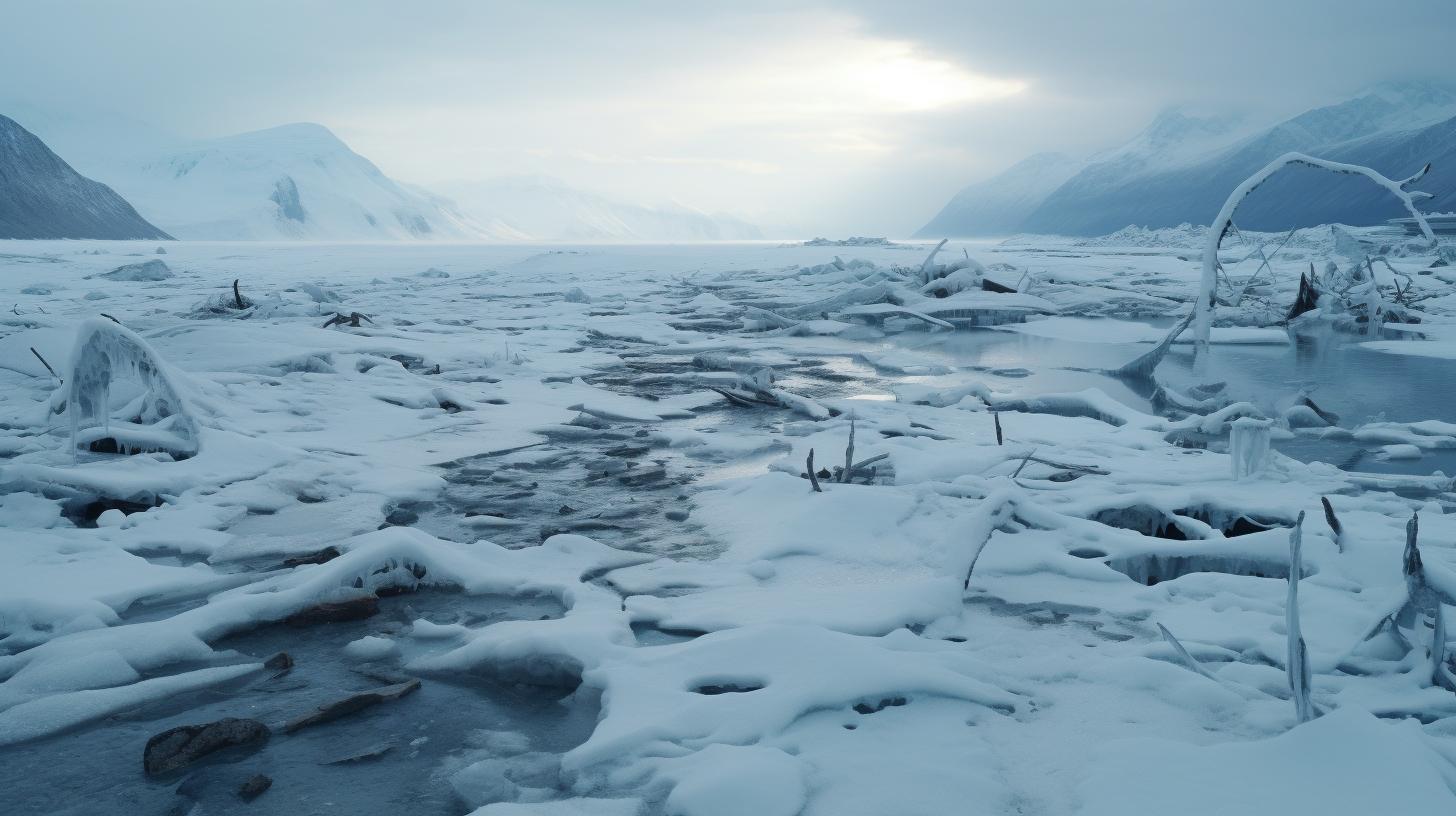The planet has sung a requiem for the once formidable cryosphere, that now hallowed entity of ice and snow which used to drape the Earth like a shimmering, alabaster cloak. The Requiem for the Deep Freeze – Life After the Cryosphere is an elegy to what was and a gaze into the bleak aftermath of the environmental apocalypse thrust upon us.
The symphony of the cryosphere’s collapse has resonated through the natural world, and the requiem we unravel is a tale of dualities: it is silence and thunder, absence and presence, emptiness and overflow. The great Northern expanse and the crown of the South now host vast necropolises of ice – a macabre dance of polar ghosts where life once flourished.
Survivors of the Cold
Amidst the barren, life does endure, adapting in strange and uncanny ways. In the tundras that kiss the ice’s desiccated lips, new ecosystems emerge. Lichens and mosses stretch their verdant fingers over rocks, once entombed in frost. But what of the larger creatures that once shared a bond with the ice, like the polar bears and seals? Their legacies persist as whispers, footnotes in a history rapidly being rewritten by the insatiable appetite of climate change.
“In the absence of ice, these creatures adapt, migrate, or perish,” says Dr. Helena Borealis, a leading cryoecologist. Her sentiment echoes throughout the scientific community, a grim acknowledgment of nature’s unforgiving rules of survival. Dr. Borealis describes at length the transitory phenomena gripping these beings, their habitats morphing into alien landscapes as their world melts away.
Cultural Thaw
Human communities, those intrepid dwellers of the polar fringes, meet the desolation of their surroundings with stoic resolve. Their cultures, rich tapestries woven over millennia, now unspool as quickly as glaciers retreat. Fishing villages stare at widening bays with trepidation; the retreating ice no longer offers its bounties but rather exposes them to the wrathful surge of untamed seas.
The Inuit communities provide a stark vantage point of this change. “Our stories are embedded in the ice. As it vanishes, so too does the essence of who we are,” confides an elder, whose name is kept anonymous as a somber reflection of the disappearing identity. His words cast shadows of a culture slipping through the cracks of a fracturing world.
Economic Ice Age
Commerce, too, endures its frozen finale. The Northern Passage, once hoped to be a maritime boon, is now a siren’s call, leading not to trade and riches but to precarity and environmental piracy. The antithesis of a golden age blooms: a dark age where every nation scrambles for diminishing resources, and eco-refugees swell in numbers, telling tales of homes subsumed by water.
And in this dystopian reality, we find ourselves yearning for the chill that once gripped the planet. The irony is thick as the once-hunted mammoth’s pelt, and the chill now eludes us. The warmth, this unyielding, relentless, and insufferable warmth, suffocates in its abundance.
Lost Legacies and Forlorn Futures
We grieve for the cryosphere as one would grieve for a lost limb, knowing the body can no longer function as it once did. The hushed tranquility of snowfall – a lullaby to the living – is now the rarest of refrains, a mythic paeon to precipitation. The world is quieter now, without the rustle of snowflakes, and yet the silence roars with the impact of its own hollowness.
Requiem for the Deep Freeze concludes not with hope, but with a reflective covenant, a vow to remember this epoch of ice, to chronicle the lessons learned too late, and to ruminate on the indelible truth of our climate’s fragility. Let the dirge we sing for the vanquished giant of the cryosphere remind us of the odyssey of survival that awaits all in the subsequently thawed world.
